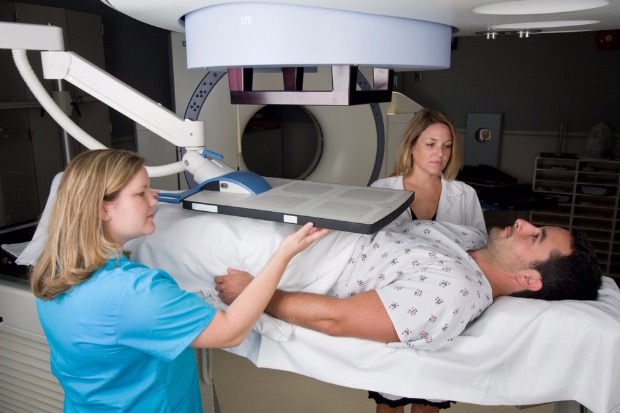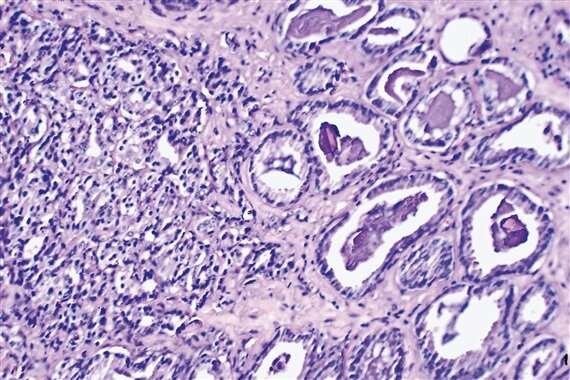Prostate cancer hits particularly black men, but is treatable and preventable.
Age and obesity other factors that increase danger.
Prostate cancer is one of the most common types of cancer in men. It is cancer that occurs in the prostate, a small walnut-shaped gland in men that produces the semen that nourishes and transports sperm. The cancer grows slowly and is initially confined to the prostate gland, where it may not cause serious harm.
However, while some types of prostate cancer grow slowly and may need minimal or even no treatment, other types are aggressive and spread quickly. If the cancer is found while still confined to the prostate gland, there is a better chance of successful treatment.
Make an appointment with your doctor if you have any signs or symptoms that worry you. Discuss prostate cancer screening with your doctor. Screening is important because prostate cancer may cause no signs or symptoms in its early stages.
It’s not clear what causes prostate cancer. What we know is that it begins when some cells in they prostate become abnormal. The changes cause the cells to grow and divide more rapidly than normal cells do.
The abnormal cells continue living when other cells would die. The accumulating abnormal cells form a tumour that can grow to invade nearby tissue. Some abnormal cells can also break off and spread (metastasise) to other parts of the body.
Prostate cancer that’s more
SYMPTOMS
advanced may cause signs and symptoms such as:
- Difficulty urinating, with urine coming out in drop.s Painful urination, blood in urine.
- Decreased force in the stream of urine.
- Blood in semen.
- Discomfort in the pelvic area. Bone pain.
- Erectile dysfunction.
RISK FACTORS
Factors that can increase risk of prostate cancer include:
- Age. Your risk of prostate cancer increases as you age.
- Race. Black men carry a greater risk of prostate cancer than do men of other races. In black men, prostate cancer is also more likely to be aggressive or advanced.
- Family history. If men in your family have had prostate cancer, your risk may be increased. Also, if you have a family history of genes that increase the risk of breast cancer or a very strong family history of breast cancer, your risk of prostate cancer may be higher.
- Obesity. Obese men diagnosed with prostate cancer may be more likely to have advanced disease that’s more difficult to treat.
COMPLICATIONS
Cancer spreading. Prostate cancer can spread to nearby organs, such as your bladder, or travel through your bloodstream or lymphatic system to your bones or other organs. Prostate cancer that spreads to the bones can cause pain and broken bones. Once prostate cancer has spread to other areas of the body, it may still respond to treatment and may be controlled, but it’s unlikely to be cured.
Incontinence. Both prostate cancer and its treatment can cause urinary incontinence. Treatment for incontinence depends on the type you have, how severe it is and the likelihood it will improve over time. Treatment options may include medications, catheters and surgery.
Erectile dysfunction. Erectile dysfunction can result from prostate cancer or its treatment, including surgery, radiation or hormone treatments. Medications, vacuum devices that assist in achieving erection and surgery are available to treat erectile dysfunction.
PREVENTION
- You can reduce your risk of prostate cancer if you:
- Choose a healthy diet full of fruits and vegetables. Focus on choosing a variety of fruits, vegetables and whole grains. Fruits and vegetables contain many vitamins and nutrients that can contribute to your health.
- Exercise most days of the week. Exercise improves your overall health, helps you maintain your weight and improves your mood.
- There is some evidence that men who don’t exercise have higher PSA (prostate specific antigen) levels, while men who exercise may have a lower risk of prostate cancer.
- Maintain a healthy weight. Ask your doctor for help creating a plan for healthy weight loss if you are overweight.
- Men are advised to consider prostate cancer screening in their 50s, or sooner for men who have risk factors for prostate cancer. Discuss your particular situation and the benefits and risks of screening with your doctor.
Prostate screening tests might include:
Digital rectal exam (DRE). During a DRE, your doctor inserts a gloved, lubricated finger into your rectum to examine your prostate, which is adjacent to the rectum.
If your doctor finds any abnormalities in the texture, shape or size of the gland, you may need further tests.
PSA test. A blood sample is drawn from a vein and analysed for PSA, a substance naturally produced by your prostate gland. It’s normal for a small amount of PSA to be in your bloodstream. However, if a higher than normal level is found, it may indicate prostate infection, inflammation, enlargement or cancer.
If a DRE or PSA test detects an abnormality, your doctor may recommend further tests to determine such as ultrasound or collecting a sample of prostate tissue.
Prostate biopsy is often done using a thin needle that’s inserted into the prostate to collect tissue.
The tissue sample is analyzed in a lab to determine whether
cancer cells are present.




